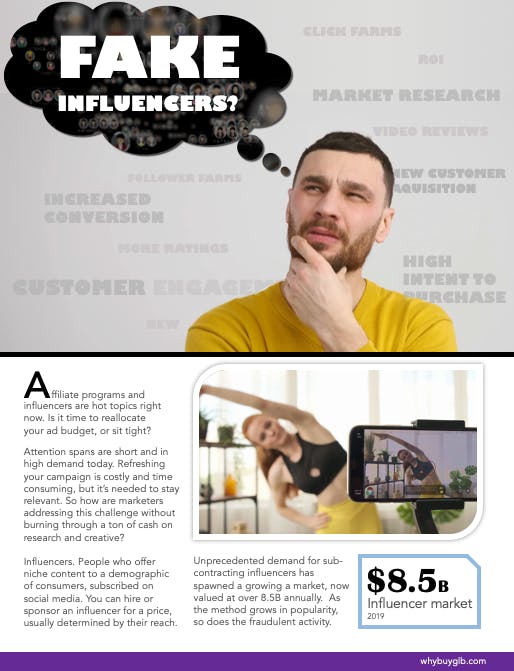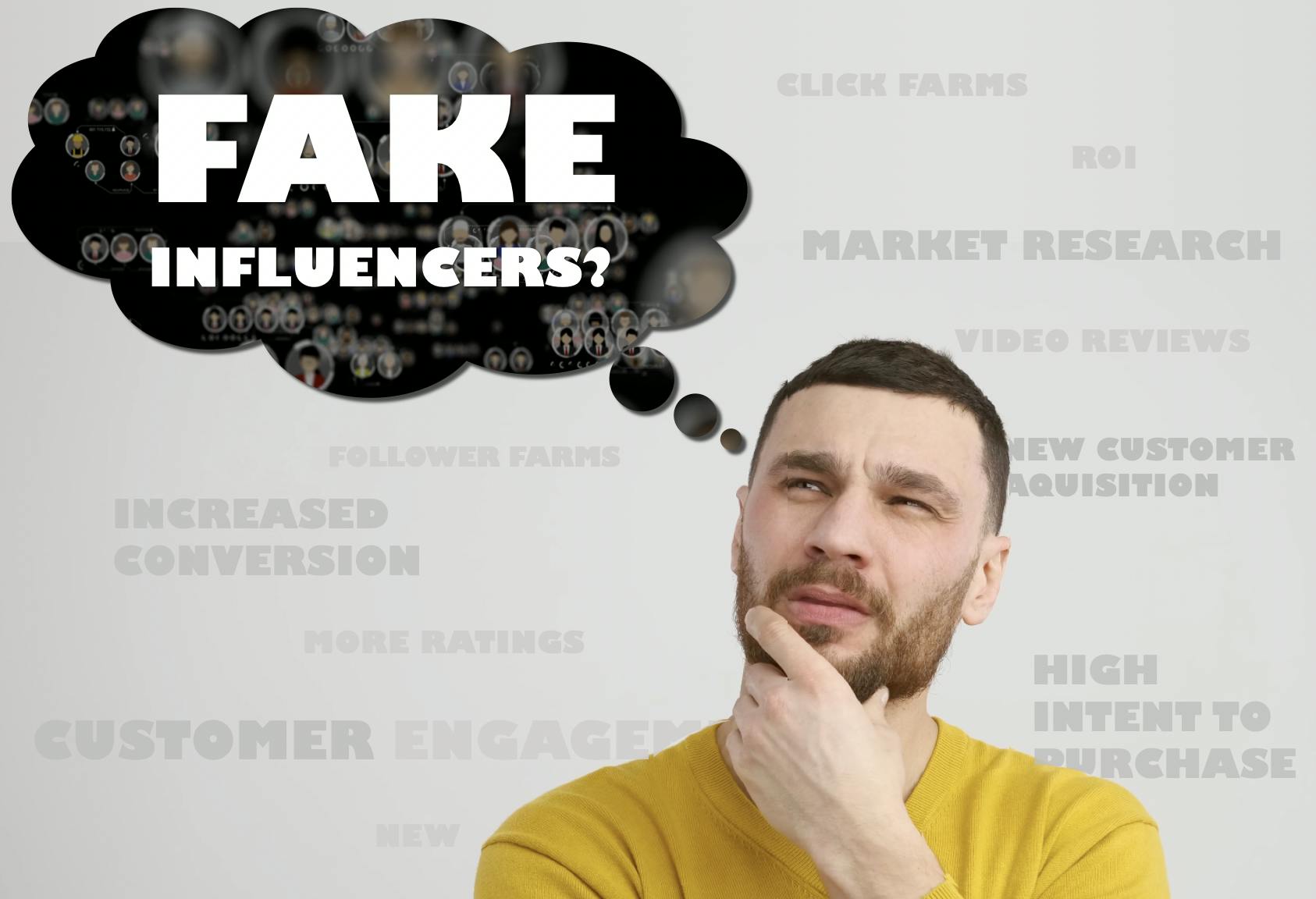
Affiliate programs and influencers are hot topics right now.
Is it time to reallocate your ad budget, or sit tight?
Attention spans are short and in high demand today. Refreshing your campaign is costly and time consuming, but it’s needed to stay relevant. So how are marketers addressing this challenge without burning through a ton of cash on research and creative?
Influencers. People who offer niche content to subscribers on social media. You can hire or sponsor an influencer for a price, usually determined by their reach. To get in front of your target demographic of consumers, influencers offer a low cost alternative to producing the equivalent result from scratch. Unprecedented demand for sub-contracting influencers has spawned a growing a market, now valued at over $8.5B annually.
How does fraud factor into influencers and ad budgets? Let’s start with reach. You find an influencer with a following that fits your target demographic. Then, assess value based on number of subscribers. You sponsor them and expect a direct message going to those followers. Hopefully, the reach consists of new customers who trust the advice and buy your offering.
Juxtaposed with traditional digital advertising methods, this is a low-cost alternative for targeted reach. No creative costs and no production costs makes it easier to buy more reach with your budget. So what is a fake influencer and how do you stay clear of them?
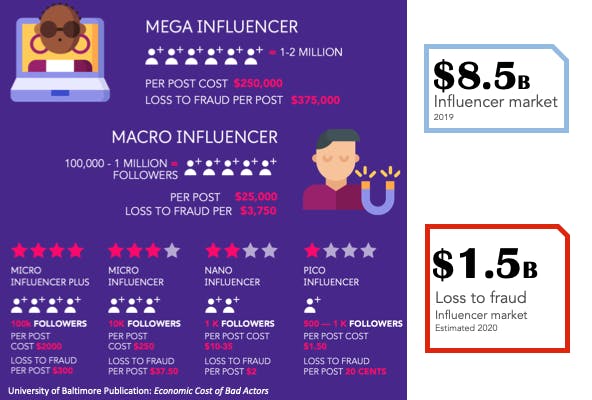
Building a following used to be hard work for influencers. Consistently answering questions and posting new media was exhausting. Nonetheless, it was how they could monetize.
Today, it’s as easy as finding a follower farm online, and buying the quantity of fake followers you need. You can increase your activity, reach, and of course, inflate prices for advertisers who might sponsor you.
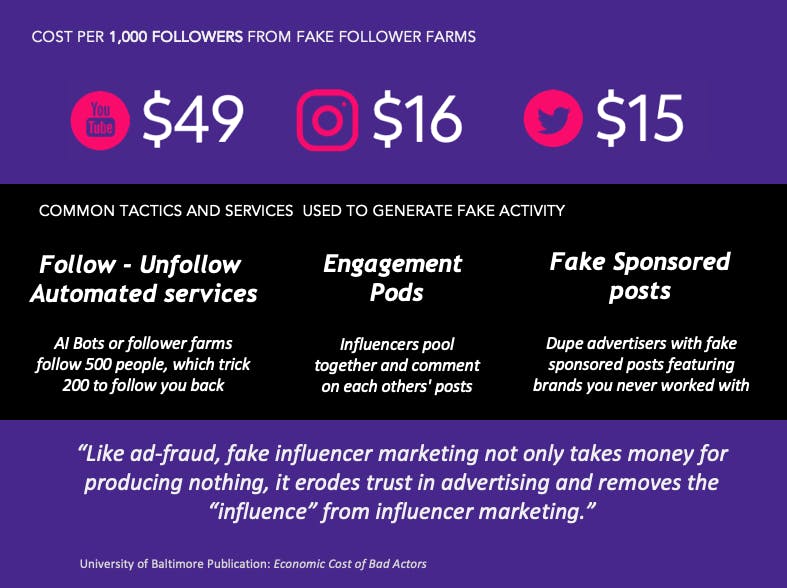
Knowing that reach is the key selling metric, there are now multiple services and tactics that give influencers a way to game the system.
The issue of influencer fraud is widespread. As the complexity rises and subsequent accountability diminishes, how do you fight it?
Given this framework, the first challenge is identifying “fake” from “real” influencers. Research, audits, and referrals help some marketers. Even finding smaller “Nano” influencers make the audit process easier, rather than the “Mega” influencers with more activity.
Still, finding real influencers can be problematic when you consider inactivity with social media accounts. Imagine vetting a reputable influencer with good content and they tout their impressive reach of followers across social media platforms. What you don’t know, is that the sponsored influencer you paid, actually has no access to 90% of their audience due to inactivity. But, they’re happy to take your money, while your message remains unseen.
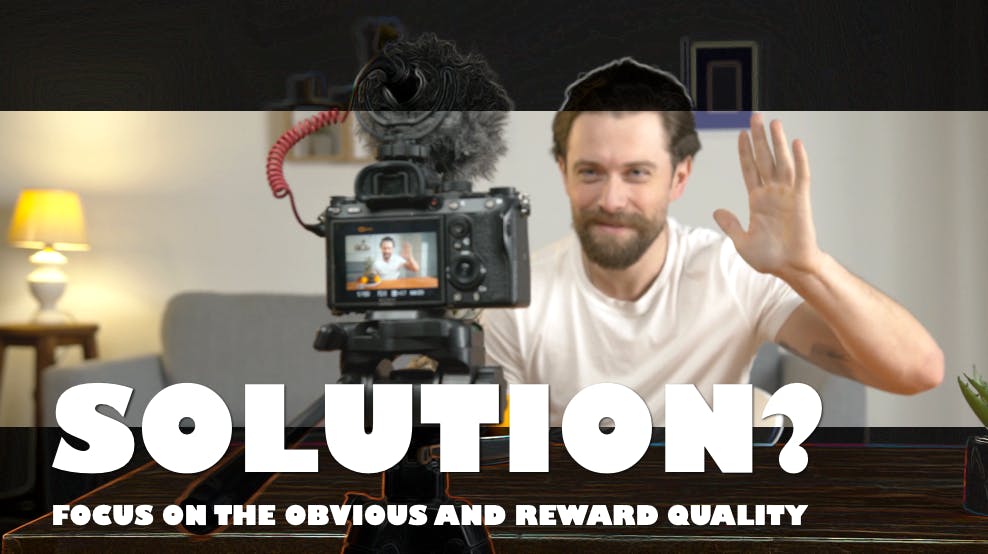
Buying targeted audiences and reach is a seductive proposition, but there’s no denying that the risk is high with fake influencers. How do you buy reach when the reach is faked?
While the efforts to police this fraudulent activity are locked in an ongoing battle, should you assess value on other metrics besides reach?
If the objective is to help consumers find reputable buying advice, you should consider retention. Retention is the engagement measurement or percentage viewed. For example, 48% retention on a 5 min video would be above average, with viewers engaged for over 2 minutes of the video.
Another method, albeit more time-consuming, would be to manually watch the content and gauge the quality and consistency of the work. Look for any obvious signs or red flags that could later tarnish your brand reputation.

Building strong relationships with content creators will take time, and there is no guarantee that their subsequent posts won’t indirectly hurt your brand. They are after all, subcontracted freelancers chasing fame, money, and growth for their personal brand.
Look for more genuine and relatable people who share buying advice based on their hobbies and passions. Although these casual reviewers sometimes lack the training or skill to create a video review, their stories are warm, entertaining, and sincere.
Feel free to download the full article below!
